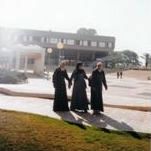
A new research database on the Bedouins of the Negev was launched last week at BGU. The electronic database contains an extensive listing of the professional literature on Bedouin society. A large portion of the articles can be downloaded free and others can be easily located using the detailed information that appears in the database.
The project is part of the ongoing efforts of The Robert H. Arnow Center for Bedouin Studies and Development to promote and encourage research on this unique community as well as education within the community. The database contains listings in English, Hebrew and Arabic and will be updated every six months. It includes research articles published in Israel and abroad, masters and PhD theses, media articles and books.
The Robert H. Arnow Center for Bedouin Studies and Development was formed in 1998 in order to promote education within the Bedouin society of the Negev. It was made possible through the generous donation of Robert H. Arnow of New York, Chairman Emeritus of the University's Board of Governors.
Additional functions of the Center include serving as a liaison unit between BGU and the Bedouin community and serving as a platform to study the Bedouin heritage, the changes taking place within the Negev Bedouin society, and the challenges facing it, through academic research and public discussion. The Center attaches great importance to the involvement of educated members of the Bedouin in research, debate and decision-making concerning societal difficulties of their community.
For this purpose, special emphasis has been placed on providing higher education opportunities for Bedouin students, helping them academically and financially. During its first decade, the Bedouin Center played a central role in the provision of tuition grants for female Bedouin students as well as a variety of support programs which led to more than two hundred Bedouin women graduating in various academic departments. A number of them have continued on to study for higher degrees. These figures can be compared to the single digit number of female graduates before the founding of the Center.
